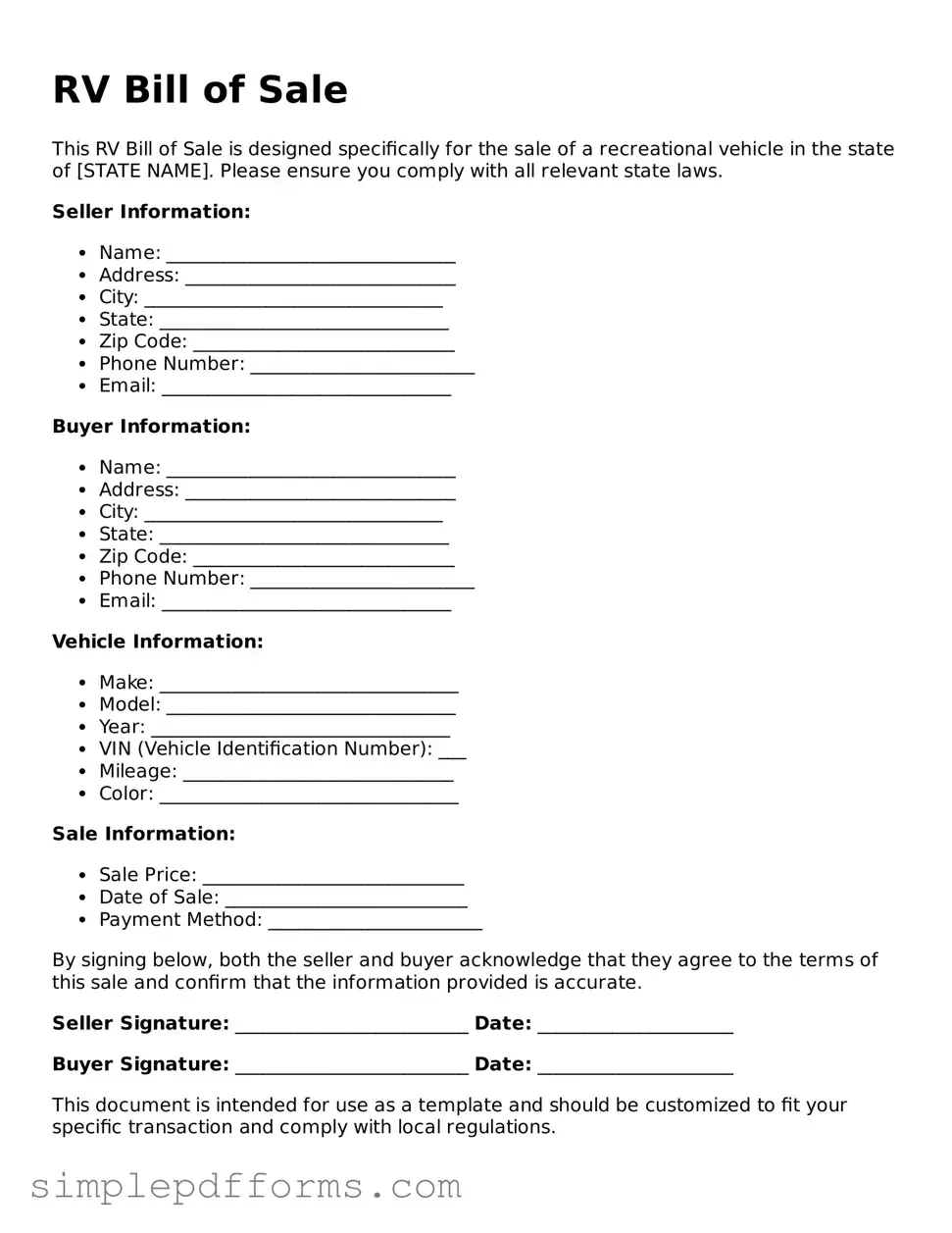When filling out an RV Bill of Sale form, many individuals unknowingly make mistakes that can lead to complications down the line. One common error is failing to provide accurate information about the vehicle. It’s essential to include the correct Vehicle Identification Number (VIN), make, model, and year. Inaccuracies in these details can create confusion and may even affect the registration process.
Another frequent mistake is neglecting to include the sale price. This figure is crucial for both the buyer and seller. Without it, the transaction may be questioned by tax authorities. It’s important to clearly state the amount agreed upon to avoid any misunderstandings later.
Many people also forget to sign the document. A Bill of Sale is not just a formality; it serves as a legal record of the transaction. Both the buyer and seller should sign the document to validate it. Omitting signatures can render the document ineffective in legal situations.
In addition, some individuals overlook the importance of including the date of the sale. This detail is significant as it establishes when the ownership transfer occurred. Without a date, it may be challenging to prove when the transaction took place, which can complicate matters if disputes arise.
Another mistake involves failing to provide accurate contact information for both parties. Including full names, addresses, and phone numbers is crucial. This information ensures that both the buyer and seller can be reached if any issues come up after the sale.
Moreover, people often forget to check local requirements. Different states may have specific regulations regarding the Bill of Sale. Familiarizing oneself with these requirements can save time and prevent future legal issues.
Lastly, not making copies of the completed form is a mistake that can lead to problems. Both parties should retain a copy for their records. Having a copy serves as proof of the transaction and can be invaluable if questions or disputes arise later on.
